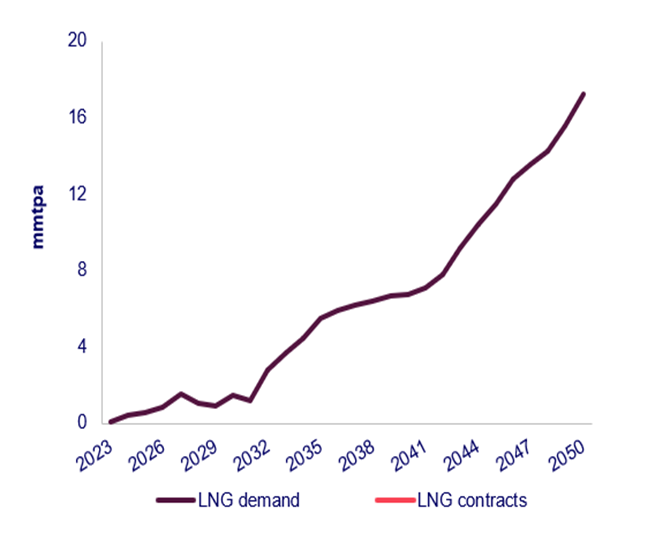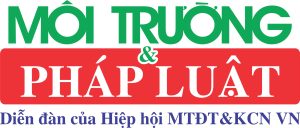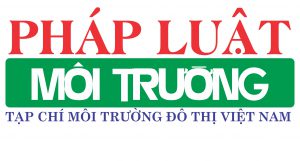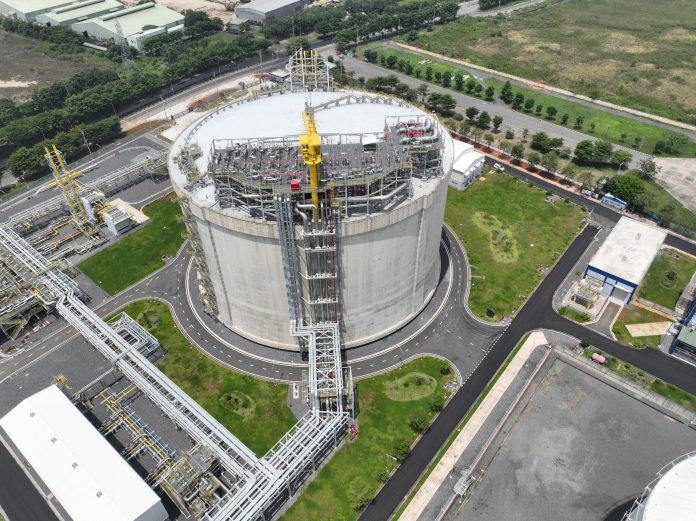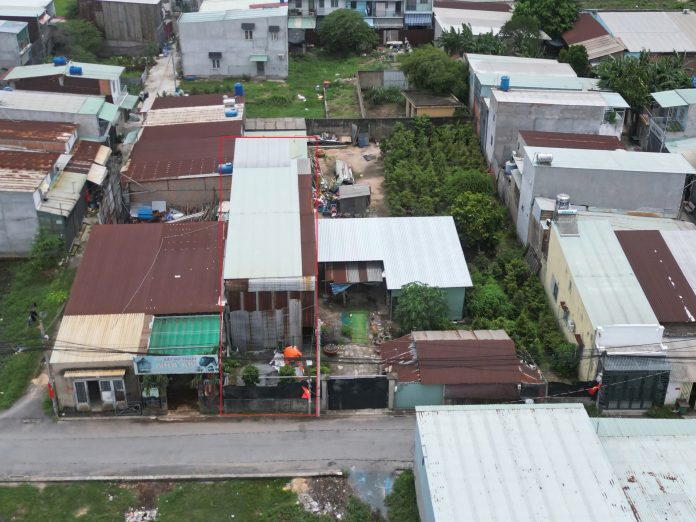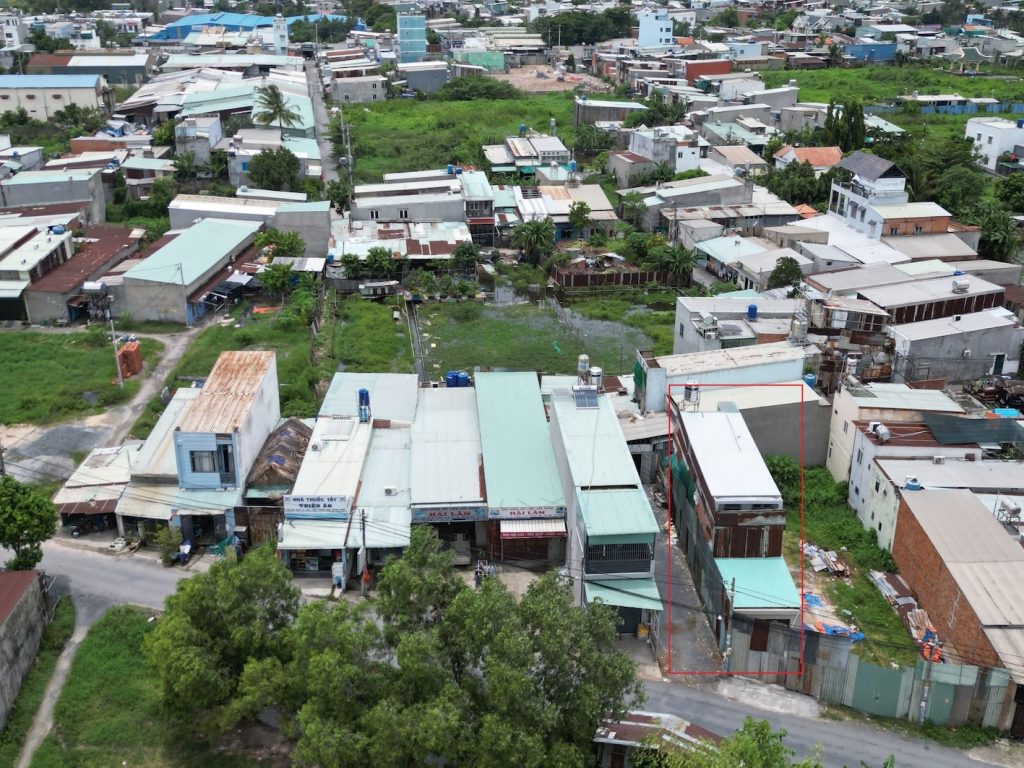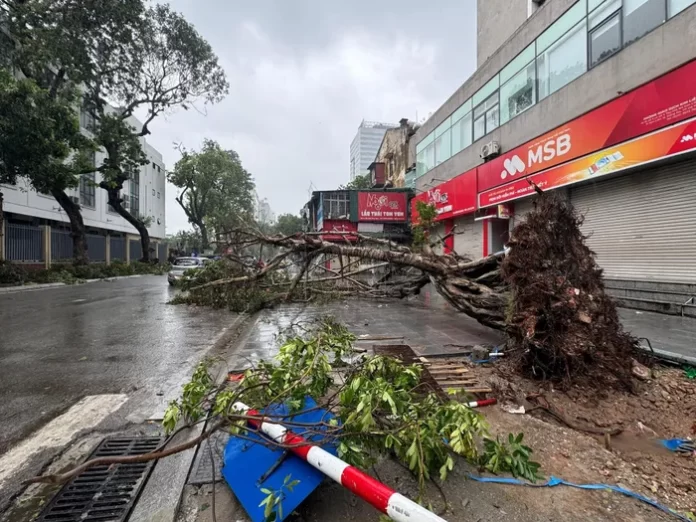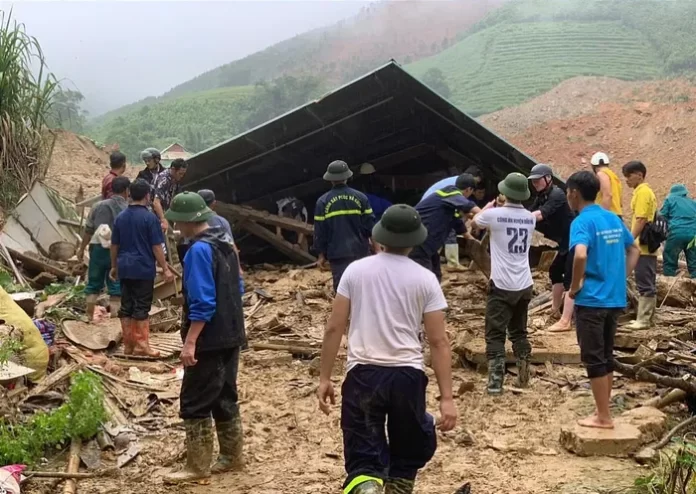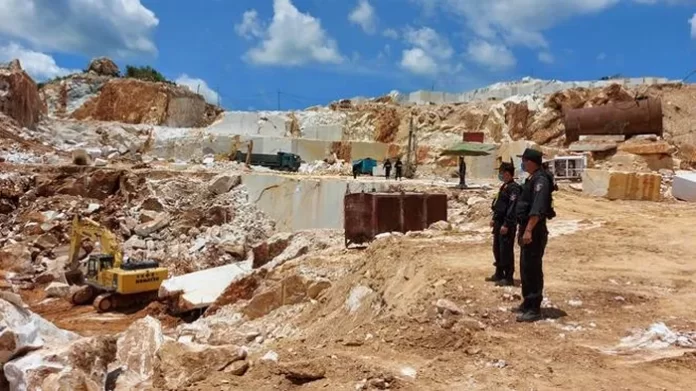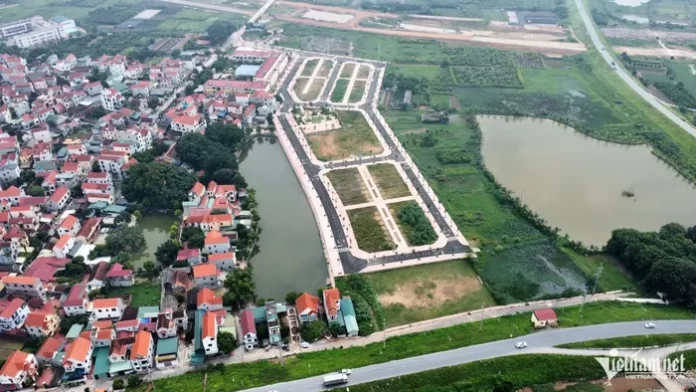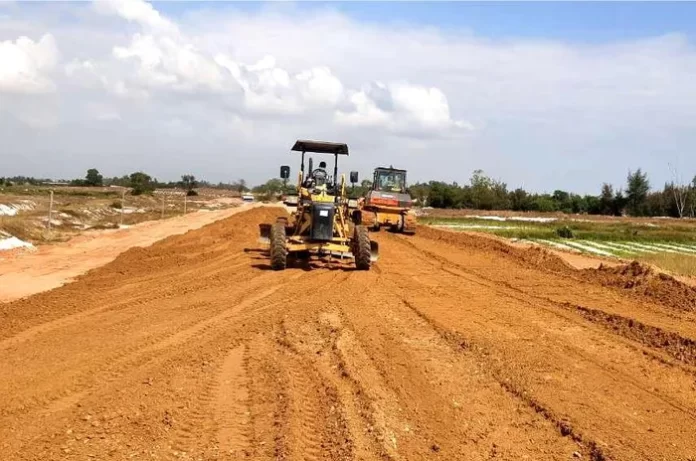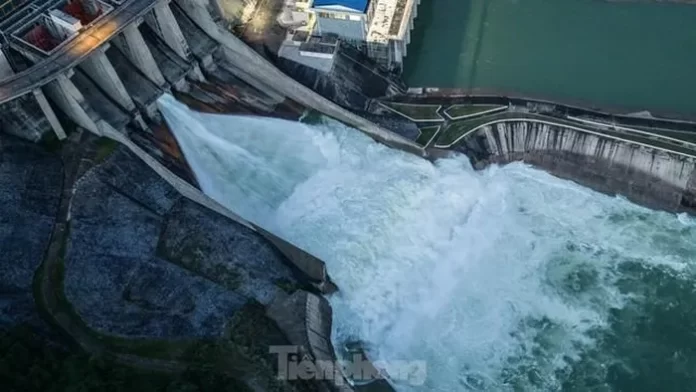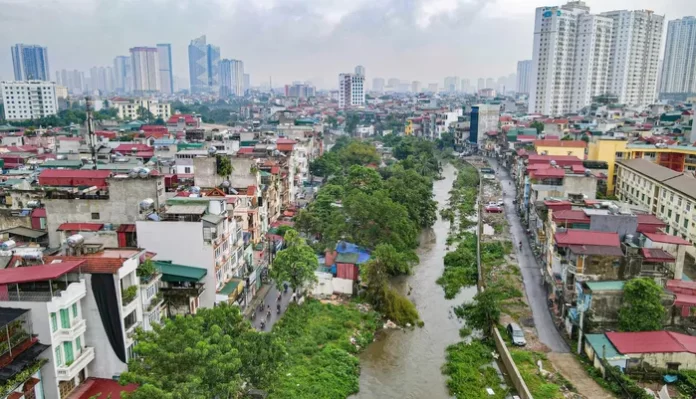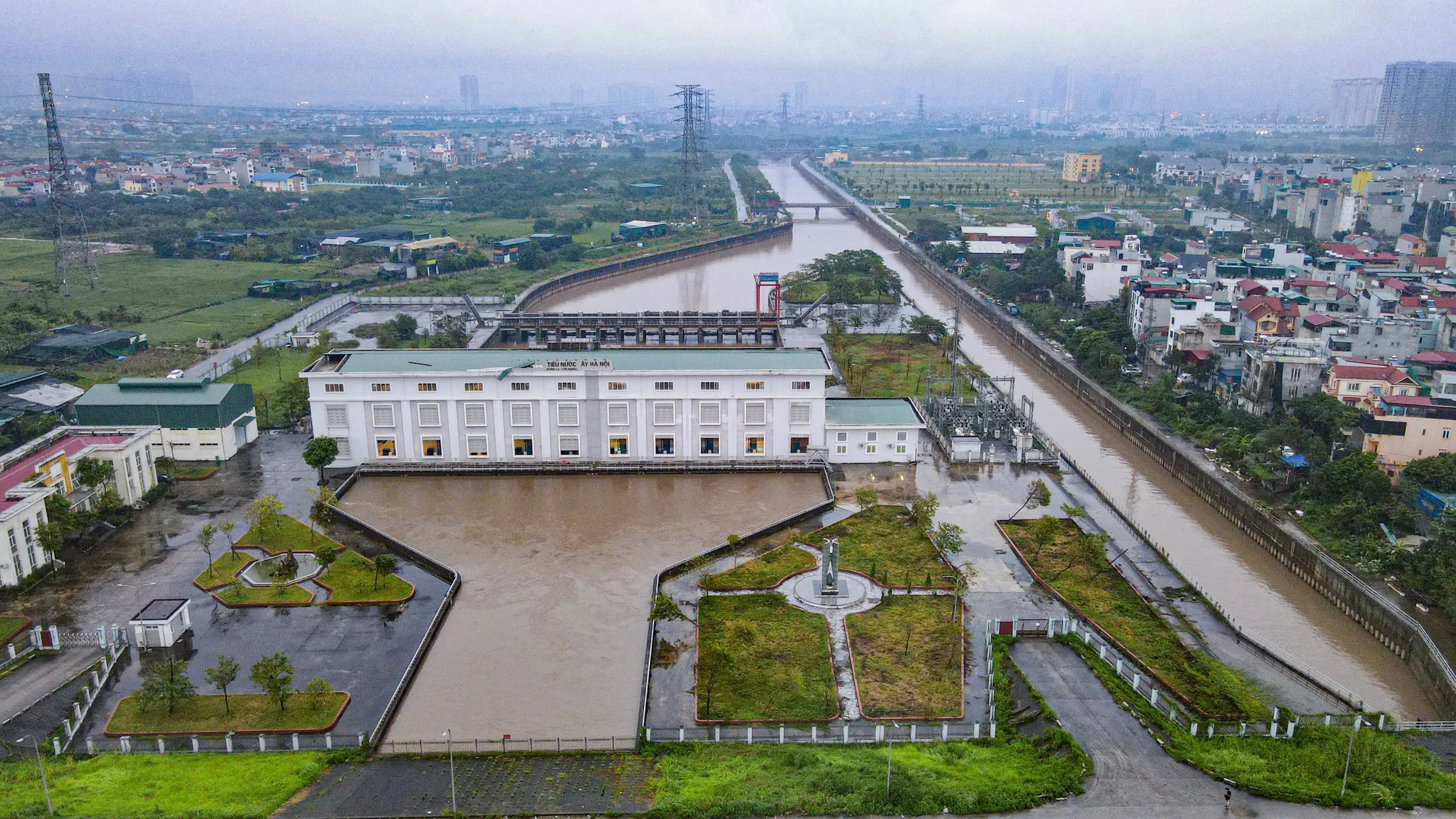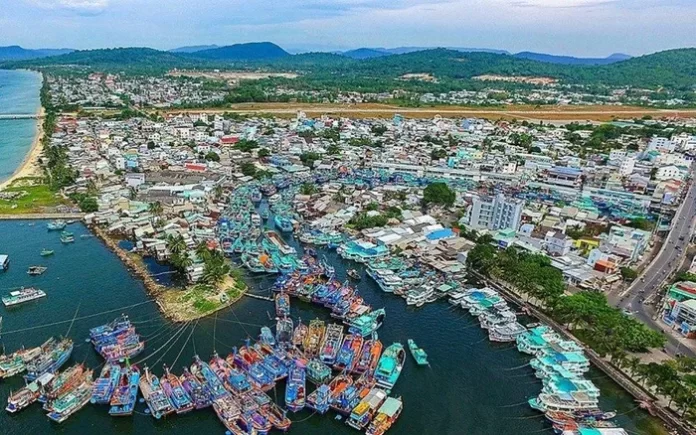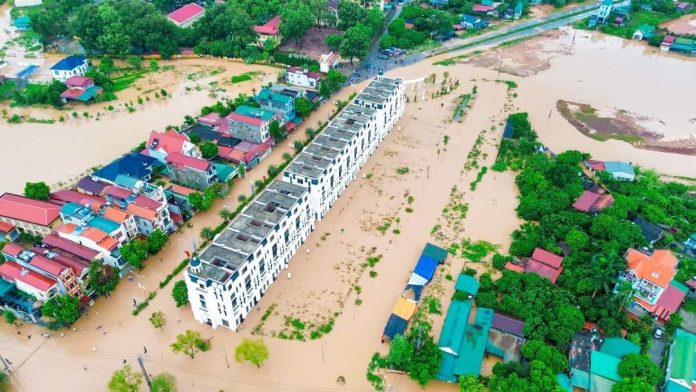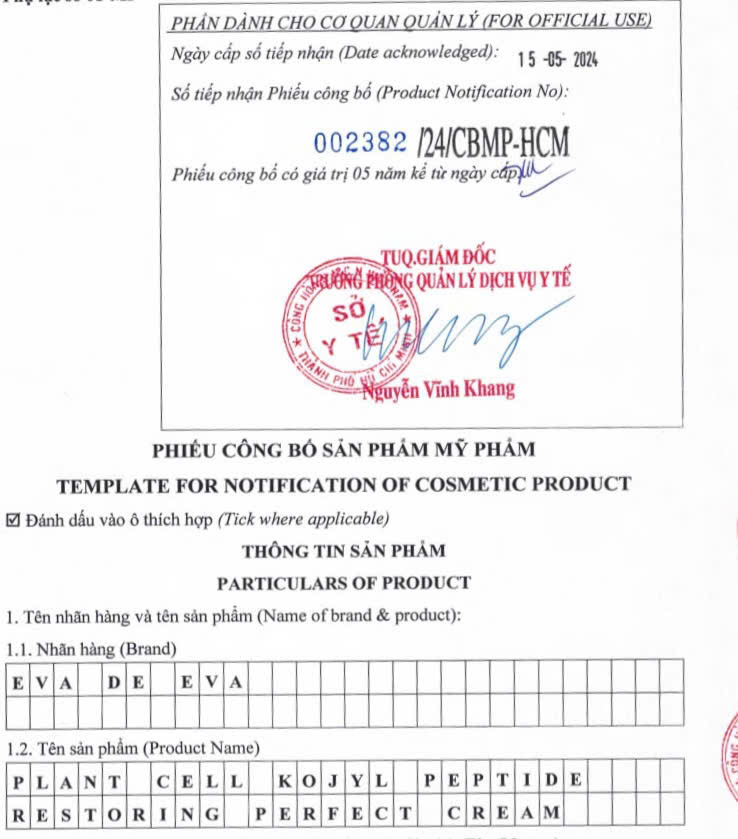Ban biên tập Chuyên trang Quản lý Môi trường, Tạp chí Môi trường và Đô thị Việt Nam trân trọng giới thiệu tới quý độc giả Công bố quốc tế lĩnh vực môi trường số 34-2024.
Về quản lý môi trường
– Quản lý định hướng bền vững trong các doanh nghiệp vừa và nhỏ. Một phân tích đa cấp ở Liên minh Châu Âu.
– Liệu mối quan tâm về môi trường của công chúng có gây ra sự chuyển giao ô nhiễm? Bằng chứng từ các khoản đầu tư ngoài Trung Quốc của các công ty Trung Quốc.
– Tài chính xanh có thể thúc đẩy quá trình chuyển đổi carbon thấp của hệ thống năng lượng không? Bằng chứng mới từ dữ liệu cấp thành phố ở Trung Quốc.
– Để trở thành một xã hội thân thiện với sinh thái và công nghệ: Nghiên cứu tác động của tài chính xanh đối với đổi mới AI.
– Quan điểm của các bên liên quan về các yếu tố thành công quan trọng đối với việc thực hiện quản trị môi trường, xã hội và quản trị (ESG).
– Các khía cạnh môi trường và kinh tế xã hội liên quan đến việc chấp nhận tái sử dụng trực tiếp nước uống được trong một thành phố lớn ở Brazil.
– Dự báo các con đường hiệp lực giữa các nguyên tố đất hiếm, năng lượng tái tạo và sự phức tạp của sản phẩm và kinh tế trong việc đạt được một tương lai carbon thấp.
– Một đánh giá có hệ thống về các rào cản trong việc thực hiện các tòa nhà năng lượng bằng không ở Úc.
– Mở khóa các hiệu ứng chính sách: Kế hoạch quản lý tài nguyên nước và ô nhiễm nước đô thị.
Về môi trường đô thị
– Tác động của khói mù đối với các mầm bệnh tiềm ẩn trong bioaerosol bề mặt ở môi trường đô thị.
– Bảo tồn đa dạng sinh học đô thị: Một khuôn khổ cho việc xây dựng mạng lưới sinh thái và xác định các khu vực ưu tiên xem xét sự khác biệt về môi trường sống giữa các loài.
– Phân bố kích thước hạt của tổng chất rắn lơ lửng trong dòng chảy nước mưa đô thị: Ảnh hưởng của việc sử dụng đất, điều kiện mưa và sự thay đổi theo mùa.
– Các hoạt động của con người thúc đẩy sự phân bố và nguy cơ sinh thái của thuốc kháng sinh trong một lưu vực sông đô thị hóa cao.
– Đánh giá hiệu suất và sự không chắc chắn của mái nhà xanh để giảm lũ lụt đô thị trong một lưu vực mật độ cao ở Ahmedabad, Ấn Độ.
– Ô nhiễm thuốc trừ sâu organochlorine trong đất và bụi từ môi trường đô thị ở đồng bằng sông Niger của Nigeria.
– Tiếp xúc với vật chất dạng hạt trong không khí khi đi lại bằng cảm biến di động: Ảnh hưởng của các phương thức vận tải trong một nghiên cứu điển hình về đô thị của Pháp.
– Phát triển bền vững thông qua chuyển đổi xanh ở các nước EU: Bằng chứng mới từ hồi quy phân vị bảng.
– Điều tra sự xuất hiện của các amin thơm trong nước thải đô thị bằng cách sử dụng lấy mẫu thụ động.
Về môi trường khu công nghiệp
– Tái xem xét mối liên hệ giữa tài chính hóa và hiệu quả tài nguyên thiên nhiên dưới góc độ phát triển tài chính và tối ưu hóa công nghiệp xanh.
– Chiến lược bền vững để phục hồi các khu vực khai thác phốt phát và định giá các sản phẩm phụ và bùn thải của ngành công nghiệp phốt phát bằng cây hồ trăn (Pistacia atlantica), cây tiêu giả (Schinus molle) và cây bạch đàn (Eucalyptus globulus).
– Loại bỏ carbon dioxide có thể dẫn đến việc sử dụng quặng sắt cấp thấp hơn trong ngành thép khử cacbon phát thải ròng âm.
– Phân tích không gian địa lý về ô nhiễm kim loại độc hại trong nước ngầm và các rủi ro sức khỏe liên quan ở khu vực công nghiệp phía dưới dãy Himalaya.
– Khoảng cách quy định và hiệu quả môi trường của doanh nghiệp: Từ góc độ khoảng cách tìm kiếm lợi nhuận.
– Xử lý nước thải ngành dược phẩm để tái sử dụng nước ở Jordan bằng cách sử dụng vùng đất ngập nước nhân tạo lai.
– Một cuộc điều tra về tiền đề và hậu quả của việc nội bộ hóa giá trị xanh giữa các doanh nghiệp được lấy mẫu ở Vương quốc Anh.
– Các tác động hiệp lực khác nhau của việc giảm phát thải tiền chất đối với PM2.5 và O3 ở một thành phố công nghiệp điển hình với sự phân bố phức tạp của khí thải.
CHUYÊN TRANG QUẢN LÝ MÔI TRƯỜNG
Tạp chí Môi trường và Đô thị Việt Nam
Xin trân trọng giới thiệu!
ENVIRONMENTAL MANAGEMENT / QUẢN LÝ MÔI TRƯỜNG
1. Recent advancement of nano-biochar for the remediation of heavy metals and emerging contaminants: Mechanism, adsorption kinetic model, plant growth and development
Environmental Research, Volume 255, 15 August 2024, 119136
Abstract
Even though researches have shown that biochar can improve soil-health and plant-growth even in harsh environments and get rid of harmful heavy metals and new contaminants, it is still not sustainable, affordable, or effective enough. Therefore, scientists are required to develop nanomaterials in order to preserve numerous aquatic and terrestrial species. The carbonaceous chemical known as nano-biochar (N-BC) can be used to get rid of metal contamination and emerging contaminants. However, techniques to reduce hetero-aggregation and agglomeration of nano-biochar are needed that lead to the emergence of emerging nano-biochar (EN-BC) in order to maximise its capacity for adsorption of nano-biochar.
To address concerns in regards to the expanding human population and sustain a healthy community, it is imperative to address the problems associated with toxic heavy metals, emerging contaminants, and other abiotic stressors that are threatening agricultural development. Nano-biochar can provide an effective solution for removal of emerging contaminants, toxic heavy metals, and non-degradable substance. This review provides the detailed functional mechanistic and kinetics of nano-biochar, its effectiveness in promoting plant growth, and soil health under abiotic stress. Nonetheless, this review paper has comprehensively illustrated various adsorption study models that will be employed in future research.
2. Research on copper flow and environmental load in China’s new infrastructure industry for carbon neutrality
Journal of Cleaner Production, Volume 466, 10 August 2024, 142857
Abstract
With the rapid development of new infrastructure in China, the demand for copper has increased significantly. In 2021, copper consumption in this sector accounted for 9.1% of China’s total consumption, becoming a new driving force for copper demand. This study analyzed copper flow characteristics and primary driving factors in China’s new infrastructure sectors using the material flow analysis method, quantified the environmental loads of the metabolic processes, and predicted copper demand in the new infrastructure sectors by 2030 through scenario analysis. The primary conclusions drawn are as follows: In 2021, copper consumption in new infrastructure sectors was 1,225,700 tons, with the rail transportation sector accounting for 59.6% and the artificial intelligence sector accounting for 0.6%. The rail transportation sector had the largest total environmental load, with carbon emissions of approximately 3,513,372 tons.
From the perspective of tons of copper products, the 5G sector had the highest environmental load, while the big data centers had the lowest. In the seven sectors of new infrastructure, the environmental load contribution rates across the four stages showed little variation, with their proportions being 49.0, 29.8, 15.8, and 5.4%, respectively. Recycling of discarded copper products can effectively reduce industrial energy consumption and carbon emissions. Under the three scenarios set in this study, the copper demand in the new infrastructure sector by 2030 will be 3.856, 3.233, and 2.625 million tons, respectively. Using wind energy to replace coal in copper production can reduce carbon emissions by approximately 43.2%.
3. Digital transformation and environmental, social, and governance greenwashing: Evidence from China
Journal of Environmental Management, Volume 365, August 2024, 121460
Abstract
This paper examines the relationship between digital transformation(DT) and environmental, social, and governance(ESG) greenwashing using Chinese listed companies as a sample from 2012 to 2022. Furthermore, it analyzes the enterprise and regional heterogeneity as well as the influencing mechanisms on this relationship. The research results indicate that corporate digital transformation significantly inhibits ESG greenwashing, with a more pronounced effect on companies in non-high-pollution industries, high-tech industries, and the eastern region. In addition, mechanism tests reveal that internal control and financing constraints play a partial mediating role.
Digital transformation suppresses ESG greenwashing by enhancing the quality of internal control and alleviating financing constraints. The primary contribution of this paper lies in demonstrating that digital transformation can serve as a strategic tool to mitigate ESG greenwashing. This enriches the research on the outcomes of digital transformation as well as the factors influencing ESG greenwashing. The conclusions of this paper provide theoretical foundations and policy recommendations for better ESG development by enterprises and governments in emerging markets. At the same time, this paper has a certain guiding role for the introduction and implementation of policies to encourage digital transformation.
4. Unleashing the potential of urban jogging: Exploring the synergistic relationship of high-density environments and exercise on Residents’ Health
Journal of Cleaner Production, Volume 466, 10 August 2024, 142882
Abstract
This study investigates the influence of high-density urban environments on residents’ health, focusing on jogging as a mediating activity. Based on the 5D framework (Density, Diversity, Design, Destination accessibility and Distance to Transit), this study examines GPS trajectory data from 1621 residents in Shanghai, analyses the relationship between high-density urban environments, jogging exercise, and residents’ health, using jogging frequency, duration, and distance as mediators, and BMI as a health metric, alongside socio-environmental factors. Key findings include the design of the path environment has a direct positive impact on residents’ health. Jogging frequency plays a negative mediating role between Density and residents’ health, whereas Jogging distance has a positive masking effect between Density and health, but a negative masking effect between Distance of the path environment and health.
Socio-environmental factors indirectly affect health indicators by adjusting the impact of built environment elements on jogging exercise. The Socio-environment has a regulatory effect on the mediating effect of jogging exercise. When the Socio-environment is better, the effects of the Design of the path environment on residents’ health through Jogging frequency are more positive, but the effects on residents’ health through Jogging distance are more negative. The duration and distance of jogging exercise have a nonlinear effect on health. These research results reveal how high-density urban environments affect residents’ health by influencing jogging exercise, providing useful information for future formulation of healthy urban construction strategies.
5. Digital economy’s role in shaping carbon emissions in the construction field: Insights from Chinese cities
Journal of Environmental Management, Volume 365, August 2024, 121548
Abstract
Achieving net-zero greenhouse gas emissions in the construction sector is essential to sustainable development policy. Previous studies have ignored the impact of the digital economy on carbon emissions in the construction industry. Using relevant city-level data from China from 2011 to 2021 and employing ArcGIS and Stata software, this study examines the current status of carbon emissions from the construction industry and investigates the impact of the digital economy on these emissions.
The findings reveal that (1) from 2011 to 2021, carbon emissions of the construction industry have a pattern of decreasing-increasing-decreasing-increasing across the country. There is an increasing concentration of areas with high and relatively high carbon discharges in Heilongjiang, Jilin, Ningxia, Inner Mongolia, Shanxi, Guangxi, and Guizhou. (2) The standard deviation ellipse indicates the core area of carbon emissions in China’s construction industry is moving northeast and becoming more decentralized. (3) Through a series of robustness tests, the digital economy has been proven to effectively reduce carbon emissions from the construction sector in municipal areas. (4) In severely cold regions, mild regions, and high-population-density cities, the digital economy reduces building sector’s carbon output. However, it stimulates carbon emissions in the hot summer and cold winter regions. (5) Mechanism tests show that the digital economy reduces China’s urban construction carbon emissions by fostering technological progress and green innovation. Urban resilience further strengthens the contribution of the digital economy to reducing carbon discharges in the urban construction sector of China. This article presents empirical evidence demonstrating how the digital economy empowers the construction industry to curtail emissions.
6. Does public environmental concern cause pollution transfer? Evidence from Chinese firms’ off-site investments
Journal of Cleaner Production, Volume 466, 10 August 2024, 142825
Abstract
The power of public environmental concern cannot be ignored. It is vital in promoting environmental legislation, corporate social responsibility, and sustainable development. Existing studies have discussed the positive governance effects of public environmental concern on environmental quality but have neglected the issue of environmental inequality due to pollution transfer resulting from differences in public environmental concern. We used the data from the off-site investment of Chinese heavy polluting firms to reveal the impact of public environmental concern on pollution transfer. Our research revealed that (1) Public environmental concern causes polluting firms to transfer out, thus generating the pollution transfer phenomenon. (2) Public environmental concern can cause pollution transfer through increased environmental penalties. From the perspective of external environmental incentives, market competition, market potential, and government environmental concern strengthen the positive influence of public environmental concern on pollution transfer.
In terms of the intrinsic motivation of firms, risk-taking capacity, green innovation ability, and asset-stranding risk weaken the positive influence of public environmental concern on pollution transfer. (3) The public environmental concern is also characterized by “grasping the large and letting go of the small”. Public environmental concern remarkably induces pollution transfer when firms’ environmental awareness is low and local government officials’ political incentives are high. These findings help policymakers to place greater emphasis on the power of public concern. Moreover, they can further improve the pluralistic governance structure of environmental regulation.
7. Can green finance promote the low-carbon transformation of the energy system? New evidence from city-level data in China
Journal of Environmental Management, Volume 365, August 2024, 121577
Abstract
This study explores the comprehensive effects of green finance (GF) on the low-carbon transition of the energy system (LTES) by analyzing panel data from 281 cities in China from 2006 to 2021. It is found that GF significantly reduces overall energy consumption and exhibits a U-shaped association with energy efficiency, while its relationship with the energy consumption structure is inverted U-shaped. After accounting for endogeneity in the robustness tests, these findings remain consistent and are therefore deemed reliable.
A mechanistic analysis reveals that GF promotes industrial upgrading, technological progress, and economic agglomeration, collectively facilitating the LTES. The impact of GF on LTES shows considerable variation among regions, influenced by their levels of economic growth, extents of marketization, and governmental environmental preferences. Our findings provide new evidence for the relationship between GF and LTES, offering a scientific basis for formulating GF policies to accelerate this transformation.
8. To be an eco- and tech-friendly society: Impact research of green finance on AI innovation
Journal of Cleaner Production, Volume 466, 10 August 2024, 142900
Abstract
Green finance can effectively support industrial upgrading and technology development, such as artificial intelligence (AI). In this paper, we attempt to pursue the possibility of a win-win situation for achieving an eco- and tech-friendly society. By asking where and how we could develop green finance and AI innovation simultaneously, this paper conducts an empirical investigation on the influence of green finance on the development of AI in China from 2011 to 2020. Based on the panel data from the 30 provinces, we introduce spatial measurement, policy effect, heterogeneity, and threshold analyses to present deeper insights into the impact of green finance on AI innovations.
Indeed, green finance could promote the progress of AI innovation. China’s green finance pilot policy is verified to promote the progress of local AI innovations. Furthermore, the spatial spillover effect and regional heterogeneity are observed as well. The promotion effect is most significant in the western area, where the green finance index is relatively low. Besides, the threshold analysis also considers how to increase the marginal effect of green finance in different areas. Finally, several policy recommendations are proposed, which contribute to providing specific directions for the policymakers to improve AI innovation and achieve sustainable development at the same time.
9. Stakeholders’ perspectives on critical success factors for environmental social and governance (ESG) implementation
Journal of Environmental Management, Volume 365, August 2024, 121583
Abstract
Environmental Social and Governance (ESG) has emerged as a sensitive issue, attracting the attention of a large audience that could not be ignored. Government bodies continue to pass regulations mandating organizations to comply with ESG principles. However, many organizations have had unsatisfactory results while promoting sustainability ideals due to various challenges. To achieve ESG goals, the present study offers a thorough framework for ESG implementation across organizations based on the critical success factor (CSF) theory and the opinions of diverse stakeholders. Following a literature review and brainstorming with ESG experts and academicians, a survey questionnaire was sent to 400 respondents to evaluate the 20 factors identified as ‘super-set’ CSFs for ESG implementation. This paper represents a novel attempt in ESG research as it conducts a survey supported by exploratory factor analysis (EFA). The interactions between the significant CSFs were studied by employing total interpretative structural modeling (TISM) and fuzzy MICMAC approach. ESG implementation is found to be highly driven by firm characteristics, earnings quality, and environmental performance, which can be argued to be the fundamental determinants of ESG implementation.
According to these findings, organizations’ leadership should (1) focus on effectively structuring firms’ attributes to swiftly operate the ESG implementation framework, (2) ensure consistent business earnings that signal improved future performance, and (3) continuously monitor and assess their environmental performance. These efforts should be supported by engaging with diverse stakeholder groups, each playing its respective role in ESG implementation. Consequently, ESG implementation across organizations is anticipated to accelerate with thoughtful organizational coordination, strategic planning, and compliance with authoritative policies. However, rather than solely focusing on creating ESG disclosure laws, policymakers should also focus on creating better ESG outcomes through effective ESG implementation. Therefore, this research offers valuable insights into improving ESG practices, which facilitates the adoption of mandatory ESG disclosure regulations.
10. Environmental and socioeconomic aspects related to the acceptance of direct potable reuse in a metropolitan city in Brazil
Journal of Cleaner Production, Volume 466, 10 August 2024, 142897
Abstract
Water scarcity is a real global threat that must be tackled to ensure biodiversity conservation, human welfare and development, and sustainability. Direct potable reuse (DPR) has been considered a promising strategy to guarantee public supply in regions with severe problems with water scarcity and high-water demand. The success of reuse practices mainly depends on the triad technology, regulation, and public acceptance. This study investigated public acceptance as a technical parameter to assess the implementation feasibility of DPR in large cities of developing countries. Residents of Campinas City (São Paulo, Brazil) were consulted through a multiple-response questionnaire addressing sociodemographic aspects, personal environmental perceptions, and the acceptable uses for wastewater reuse. The results showed a low rejection rate ( ∼ 7%) to DPR despite this not being regulated in Brazil. A total of 47% of the volunteers declared that they would accept the DPR of domestic sewage after appropriate treatments and technologies approved by the World Health Organization (WHO), and 46% would accept it after more information.
Age was an essential factor for DPR acceptance, being greater among those between 30 and 45 years old. No statistically significant differences in potable reuse acceptability were observed among participants’ sex and self-declaration of race. The majority of volunteers (85%) considered water reuse very important, and most participants (51%) already practice non-potable household water reuse daily and do so out of environmental awareness. Trust in the water supply concessionaire was a key factor in DPR acceptance. This study is essential for discussing innovative public-oriented solutions to achieve water security in developing countries, especially considering the scarcity of investigations on DPR acceptability in South America.
11. Forecasting synergistic pathways between rare earth elements, renewable energy, and product and economic complexities in achieving a low-carbon future
Journal of Environmental Management, Volume 365, August 2024, 121578
Abstract
Recent decades have witnessed an unprecedented transformation in the global energy landscape, driven by environmental concerns and the quest for sustainable economic growth. As the world grapples with the urgent need for decarbonization, the utilization of renewable energy technologies with the instrumental role of rare earth elements (REEs) has come to the forefront. However, empirical investigations into their synergistic pathways for product and economic complexities concerning achieving a low-carbon future remain scarce. Therefore, we forecast synergistic pathways between the REE supply, renewable energy, economic and product complexities, and GDP growth using a panel dataset of 11 REE-producing countries from 1990 to 2023. We used Common Correlated Effects and Temporal Causal Models as primary methods to estimate panel long-run elasticities and subsequently forecast mutual causal synergies between the variables.
The results indicated that REE supply led to renewable energy and economic growth that further elevated the countries’ product and economic complexities rankings. GDP growth increased REE production, economic complexity, and renewable energy directly, and consequently, product complexity and REE production through them. This underscores the positive role of REE production coupled with renewable energy technologies in achieving a low-carbon future based on economic diversification, enhanced industrial capabilities, and technological sophistication.
12. A systematic review of barriers to implementing net zero energy buildings in Australia
Journal of Cleaner Production, Volume 467, 15 August 2024, 142910
Abstract
Building operations use 45% of the total energy in Australia, and Net-Zero Energy Buildings (NZEBs) are instrumental in achieving net zero emissions by 2050. However, research reveals that various factors hinder NZEB adoption in Australia, and it is imperative to contextualise the barriers, thereby highlighting clear gaps that can be addressed to enhance the implementation of NZEB in Australia. This study presents a systematic literature review and bibliometric analysis to examine the barriers that hinder the implementation of NZEB contextualised within the Australian building industry. The paper’s novelty resides in its contextualisation of barriers to NZEB thereby highlighting clear gaps that can be addressed to enhance the implementation of NZEB in Australia. Emergent results reveal the most impactful barriers experienced and the inter-relatedness between barriers and their effects on each other.
These identified barriers are also compared with comparable countries, including the UK, China, Italy and the US. New insight and knowledge acquired provide a basis for assessing potential solutions to the main barriers. Findings show that a lack of knowledge, climate issues, and cost issues, in addition to government policy factors, are considered primary barriers encountered by the industry, hindering the achievement of NZEBs. It is imperative that future studies and initiatives counteract these impacts to realise a better implementation of NZEB in the Australian context.
13. Unlocking policy effects: Water resources management plans and urban water pollution
Journal of Environmental Management, Volume 365, August 2024, 121642
Abstract
Water resource management, as a foundation for supporting sustainable urban development, has garnered increasing attention from scholars. Developing effective water resource management plans is a major challenge faced by countries worldwide. This study uses the 2015 Water Pollution Control and Prevention Action Plan (WPCAP) in China as a natural experiment and employs a Difference-in-Differences (DID) model to estimate the relationship between WPCAP and urban water pollution from 2010 to 2021. The findings are as follows: 1) WPCAP reduces water pollution. 2) WPCAP decreases water pollution in high-policy-pressure cities but increases water pollution in low-policy-pressure cities within a 60 km radius, particularly having a significantly negative impact on water pollution in low-policy-pressure cities with low altitude. 3) optimizing industrial and domestic water use, as well as enhancing sewage treatment capabilities, are crucial pathways through which WPCAP reduces water pollution. Additionally, WPCAP significantly improves water pollution control capabilities in cities with abundant water resources, large cities, and industrialized cities. 4) although WPCAP’s ability to control water pollution increases management costs, it also raises residential income and promotes population growth. These findings have important implications for the sustainable development of water resources in emerging countries, including China.
14. How does green finance policy in China help reduce pollution emissions? Energy efficiency improvement or green innovation
Journal of Cleaner Production, Volume 467, 15 August 2024, 142933
Abstract
China’s 2016 Guidance on Building a Green Financial System aims to reallocate private financial resources to eco-friendly enterprises. This study treats the 2016 green finance policy (GFP) as an external shock and employs the difference-in-differences (DID) approach to analyze the effect of GFP on the air pollutant emissions intensity of listed enterprises. The findings show that heavy-polluting enterprises have significantly reduced their air pollutant emissions intensity due to GFP. This reduction is achieved through improving energy efficiency rather than green innovation. Consequently, an energy rebound effect is triggered that partially offsets the energy savings achieved through improved energy efficiency. Furthermore, we have observed that the green innovations driven by GFP are of poor quality, and they neglect end-of-pipe treatment and clean energy use. As a result, these innovations are unable to achieve the intended emissions reduction. Finally, thanks to strict environmental regulations, non-state-owned firms have a more profound inclination towards embracing green transformation than state-owned firms, resulting in a greater impact of GFP on the former.
15. Study on factors influencing carbon dioxide emissions and carbon peak heterogenous pathways in Chinese provinces
Journal of Environmental Management, Volume 365, August 2024, 121667
Abstract
Implementing a Carbon Peak Action Plan at the regional level requires comprehensive consideration of the developmental heterogeneity among different provinces, which is an effective pathway for China to realize the goal of carbon peak by 2030. However, there is currently no clear provincial roadmap for carbon peak, and existing studies on carbon peak pathways inadequately address provincial heterogeneity. Therefore, this paper employs the Stochastic Impacts by Regression on Population, Affluence, and Technology (STIRPAT) model to decompose assess 8 factors influencing carbon emissions of 30 provinces. According to scenario analysis, the paper explores the differentiated pathways for provincial carbon peaks based on policy expectation indicators (including population, economy, and urbanization rate) and comprises policy control indicators (including the energy structure, energy efficiency, industrial structure, transportation structure, and innovation input). The results indicate that population, per capita GDP, urbanization rate, and innovation input are the primary factors for influencing (negatively) the growth of carbon emissions. In contrast, the optimization and upgrading of the industrial structure, energy intensity, energy structure, and transportation structure have mitigating effects on carbon emissions, especially for the first two factors.
The forecasting results reveal that robust regulations of the energy and industry can effectively accelerate carbon peak at a reduced magnitude. If developed at BAU, China cannot achieve carbon peak by 2030, continuing an upward trend. However, by maximizing the adjustment strength of energy and industrial transformation within the scope of provincial capabilities, China could achieve carbon peak as early as 2025, with a peak of 12.069 billion tons. In this scenario, 24 provinces could achieve carbon peak before 2030. Overall, this study suggests the feasibility of differentiated pathway to achieve carbon peaks in China, exploring the carbon peak potential and paths of 30 provinces, and identifying provinces where carbon peak is more challenging. It also provides a reference for the design of carbon peak roadmaps at both provincial and national levels and offers targeted recommendations for the implementation of differentiated policy strategies for the government.
16. Public attention and psychological trends towards waste reduction: A large-scale data analysis based on social media
Journal of Cleaner Production, Volume 467, 15 August 2024, 142873
Abstract
In the digital era, using social media big data to capture the true views and psychological trends shown by the public regarding waste reduction could considerably improve the formulation of targeted waste reduction policies and guide residents to participate in environmental governance from the source side. This study used big data mining technology to trawl 617,771 pieces of waste reduction text from a typical social media site (Sina Microblog). A machine learning algorithm model was used to identify the psychological and cognitive focus of the public and their preferences based on large-scale text data. The temporal and spatial differences in public attention trends, hot topic trends, and sentiment trends were also investigated. The results showed that the public attention level was related to the release of policies by government and that public attention in the southeast coastal areas was higher than that in the northwest inland areas.
Moreover, waste reduction had a “working attribute” because the public paid more attention to waste reduction during working hours (i.e., 9:00–12:00 and 15:00–18:00) than during leisure hours. In terms of individual heterogeneity, males were initiators of the topic, whereas females were followers. In particular, participation by young people in waste reduction discussions was higher than for other groups. The topic analysis showed that public attention followed a cooperative construction pattern that had multiple entities, including the individual, community, and government. Overall, the public sentiment score towards waste reduction increased year by year during the study period, with positive sentiment posts accounting for over 70% of the total number of blog posts, and that the vast majority of residents had a positive attitude towards waste reduction. This study expanded current research knowledge by exploring the public attitude response to waste reduction from a social media perspective. The study will help the government to effectively intervene in public behavior tendencies toward waste reduction from the psychological perspective and provided important implications about how the government can enhance its use of social media to effectively guide public opinion and improve policies.
URBAN ENVIRONMENT/ MÔI TRƯỜNG ĐÔ THỊ
1. Impact of haze on potential pathogens in surface bioaerosol in urban environments
Environmental Pollution, Volume 355, 15 August 2024, 124164
Abstract
Air quality considerably affects bioaerosol dynamics within the atmosphere. Frequent haze events, with their associated alterations in bioaerosol composition, may pose potential health risks. This study investigated the microbial diversity, community structure, and factors of PM2.5 within an urban environment. We further examined the impact of haze on potentially pathogenic bacteria in bioaerosols, and analyzed the sources of haze pollution. Key findings revealed that the highest levels of microbial richness and diversity were associated with lightly polluted air conditions.
While the overall bacterial community structure remained relatively consistent across different air quality levels, the relative abundance of specific bacterial taxa exhibited variations. Meteorological and environmental conditions, particularly sulfur dioxide, nitrogen dioxide, and carbon monoxide, exerted a greater influence on bacterial diversity and community structure compared to the physicochemical properties of the PM2.5 particles themselves. Notably, haze events were observed to strengthen interactions among airborne pathogens. Stable carbon isotope analysis suggested that coal combustion and automobile exhaust were likely to represent the primary source of haze during winter months. These findings indicate that adoption of clean energy alternatives such as natural gas and electricity, and the use of public transportation, is crucial to mitigate particle and harmful pollutant emissions, thereby protecting public health.
2. Urban biodiversity conservation: A framework for ecological network construction and priority areas identification considering habit differences within species
Journal of Environmental Management, Volume 365, August 2024, 121512
Abstract
The construction of ecological networks within the context of urbanization is an effective approach to cope with the challenges of urban biodiversity decline, representing a crucial goal in urban planning and development. However, existing studies often overlook the richness and uniqueness within species communities by homogenizing traits of species in the same class. This study proposes a framework for constructing and optimizing ecological networks focused on differential conservation within the same class. By classifying birds into three groups (specialists of water, forest or urban areas) based on their ecological requirements and urbanization tolerance, we constructed an ecological network tailored to their distinct migratory dispersal patterns. We then identified strategic areas including pinch points, barriers, and breakpoints specific to each bird group. Our findings reveal notable variations in suitable habitat distribution among different bird groups in urban environments. Corridor layouts varied according to habitat preferences and migratory dispersal patterns. Despite these differences, urban built-up areas persist as central hubs for the distribution of suitable habitats for 75% of bird species, with peripheral mountain-plain transition areas constituting 63% of crucial dispersal corridors.
This emphasizes the critical role of urban built-up areas in maintaining biodiversity and ecological connectivity. Prioritizing connectivity between central urban areas and distant natural spaces is imperative. Our approach innovatively classifies and constructs networks to identify strategic areas with diverse species-specific attributes, providing valuable spatial information for land planning and guiding solutions to enhance target species. While the primary focus is on bird conservation in Beijing, our framework is broadly applicable to global biodiversity management and green planning under urbanization challenges. Overall, this study offers innovative insights for urban planning development and serves as decision support for prioritizing urban actions.
3. Insights into the panorama of multiple DNA viruses in municipal wastewater and recycled sludge in Tianjin, China
Environmental Pollution, Volume 355, 15 August 2024, 124215
Abstract
Environmental viruses in wastewater and sludge are widely recognized for their roles in waterborne diseases. However, previous studies mainly focused on RNA viruses, and little is known about the diversity of DNA viral communities and their driving factors in municipal wastewater treatment environments. Herein, we conducted a pilot study to explore DNA virus profiles in municipal wastewater and recycled sludge by metagenomics method, and track their temporal changes in northern China. Results showed that 467 viral species were co-shared among all the samples. We identified six families of human viruses with a prevalence of 0.1%, which were rare but relatively stable in wastewater and sludge for six months. Adenoviridae, Parvoviridae, and Herpersviridae were the most dominant human viral families in municipal wastewater and recycled sludge.
A time series of samples revealed that the dynamic changes of human DNA viruses were stable based on qPCR results, particularly for high-risk fecal-oral transmission viruses of adenovirus, bocavirus, polyomavirus, human gamma herpesvirus, human papillomavirus, and hepatitis B virus. Concentrations of Adenovirus (5.39–7.48 log10 copies/L) and bocavirus (4.36–7.48 log10 copies/L) were observed to be the highest in these samples compared to other viruses. Our findings demonstrated the DNA viruses’ high prevalence and persistence in municipal wastewater treatment environments, highlighting the value of enhancing public health responses based on wastewater-based epidemiology.
4. Particle size distribution of total suspended sediments in urban stormwater runoff: Effect of land uses, precipitation conditions, and seasonal variations
Journal of Environmental Management, Volume 365, August 2024, 121467
Abstract
Understanding particle size distribution (PSD) of total suspended sediments in urban runoff is essential for pollutant fate and designing effective stormwater treatment measures. However, the PSDs from different land uses under different weather conditions have yet to be sufficiently studied. This research conducted a six-year water sampling program in 15 study sites to analyze the PSD of total suspended sediments in runoff. The results revealed that the median particle size decreased in the order: paved residential, commercial, gravel lane residential, mixed land use, industrial, and roads. Fine particles less than 125 μm are the dominant particles (over 75%) of total suspended sediments in runoff in Calgary, Alberta, Canada. Roads have the largest percentage of particles finer than 32 μm (49%).
Gravel lane residential areas have finer particle sizes than paved residential areas. The results of PSD were compared with previous literature to provide more comprehensive information about PSD from different land uses. The impact of rainfall event types can vary depending on land use types. A long antecedent dry period tends to result in the accumulation of fine particles on urban surfaces. High rainfall intensity and long duration can wash off more coarse particles. The PSD in spring exhibits the finest particles, while fall has the largest percentage of coarse particles. Snowmelt particles are finer for the same land use than that during rainfall events because the rainfall-runoff flows are usually larger than the snowmelt flows.
5. Anthropogenic activities drive the distribution and ecological risk of antibiotics in a highly urbanized river basin
Science of The Total Environment, Volume 938, 15 August 2024, 173596
Abstract
Although antibiotics are widely detected in river water, their quantitative relationships with influencing factors in rivers remain largely unexplored. Here, 15 widely used antibiotics were comprehensively analyzed in the Dongjiang River of the Pearl River system. The total antibiotic concentration in river water ranged from 13.84 to 475.04 ng/L, with fluoroquinolones increasing from 11 % in the upstream to 38 % in the downstream. The total antibiotic concentration was high downstream and significantly correlated with the spatial distribution of population density, animal production, and land-use type. The total risk quotient of antibiotics for algae was higher than that for crustaceans and fish. Based on the optimized risk quotient method, amoxicillin, ofloxacin, and norfloxacin were identified as priority antibiotics.
The key predictors of antibiotic levels were screened through Mantel test, correlation analysis, and multiple regression models. Water physicochemical parameters significantly impacted antibiotics and could be used as easy-to-measure surrogates associated with elevated antibiotics. Cropland negatively affected fluoroquinolones and sulfonamides, whereas urban land exerted positive impacts on fluoroquinolones, β-lactam, and sulfonamides. In the main stream, population, animal production, urbanization status, and economic development had key effects on the distribution of florfenicol, norfloxacin, ofloxacin, and sulfadiazine.
6. Performance and uncertainty assessment of green roofs for urban flood reduction in a high-density catchment in Ahmedabad, India
Journal of Environmental Management, Volume 365, August 2024, 121500
Abstract
Urban flooding poses a significant challenge to the rapidly growing Indian cities. Low-impact development strategies such as green roofs have shown the potential to reduce urban flooding. However, their performance assessment significantly varies across different studies. Therefore, the study’s primary objective is to evaluate green roofs in the Indian context. For this evaluation, the green roofs are assessed based on building-level implementation scenarios for a high-density urban area in India for 25%,50%, and 75% application rates and different rainfall intensities (2,3 and 4-h duration and 2,5,10 and 25-year frequencies).
Secondly, to probe the variations in the green roof performance across studies, uncertainty contributions to the runoff reduction from different parameters are quantified. The results show that green roofs can reduce up to 62% of flood volume and 24% of runoff. However, they are reasonably effective only beyond 25% application rates. Further, rainfall intensity contributes the most to the uncertainty of runoff reduction from green roofs. This uncertainty assessment implies that localized evaluation of green roofs depending on local rainfall conditions is required for city-wide policy planning. The study has a significant contribution to building confidence in the ability of green roofs to reduce urban floods in the context of developing countries like India.
7. Organochlorine pesticide contamination of soils and dust from an urban environment in the Niger Delta of Nigeria
Science of The Total Environment, Volume 938, 15 August 2024,
Abstract
The concentrations, sources, and risk of twenty organochlorine pesticides (OCPs) in soils and dusts from a typical urban setting in the Niger Delta of Nigeria were examined. The Σ20 OCP concentrations (ng g−1) varied from 4.49 to 150 with an average value of 32.6 for soil, 4.67 to 21.5 with an average of 11.7 for indoor dust, and 1.6 to 96.7 with an average value of 23.5 for outdoor dust. The Σ20 OCP concentrations in these media were in the order: soil > outdoor dust > indoor dust, which was in contrast with the order of the detection frequency, i.e., indoor dust (95 to 100 %) > soil (60 to 90 %) > outdoor dust (30 to 80 %).
The concentrations of the different OCP classes in these media followed the order: aldrin + dieldrin + endrin and its isomers (Drins) > chlordanes > dichlorodiphenyltrichloroethane (DDTs) > hexachlorocyclohexane (HCHs) > endosulfans for outdoor dust and soil, while that of the indoor dust followed the order: Drins > chlordanes > endosulfans > DDTs > HCHs. The cancer risk values for human exposure to OCPs in these sites exceeded 10−6 which indicates possible carcinogenic risks. The sources of OCPs in these media reflected both past use and recent inputs.
8. Exposure to airborne particulate matter during commuting using portable sensors: Effects of transport modes in a French metropolis study case
Journal of Environmental Management, Volume 365, August 2024, 121400
Abstract
Outdoor exposure to particulate matter (PM2.5 and PM10) in urban areas can vary considerably depending on the mode of transport. This study aims to quantify this difference in exposure during daily travel, by carrying out a micro-sensor measurement campaign. The pollutant exposure was assessed simultaneously over predefined routes in order to allow comparison between different transport modes having the same starting and ending points. During the six-week measurement campaign, the average reference values for PM background concentrations were 13.72 and /m for the PM2.5 and PM10, respectively. The results revealed that the mode with the highest exposure to PM2.5 adjusted to background concentration (PM) was the bus (1.65) followed by metro (1.51), walking (1.33), tramway (1.31), car (1.09) and finally the bike (1.06). For PM, the tramway had the highest exposure (1.86), followed by walking (1.68), metro (1.65), bus (1.61), bike (1.43) and finally the car (1.39). The level of urbanization around the route and the presence of preferential lanes for public transportation influenced the concentration to which commuters were exposed. For the active modes (bike and walking), we observed frequent variations in concentrations during the trip, characterized by punctual peaks in concentration, depending on the local characteristics of road traffic and urban morphology.
Fluctuations in particulate matter inside public transport vehicles were partly explained by the opening and closing of doors during stops, as well as the passenger flows, influencing the re-suspension of particles. The car was one of the least exposed modes overall, with the lowest concentration variability, although these concentrations can vary greatly depending on the ventilation parameters used. These results encourage measures to move the most exposed users away from road traffic, by developing a network of lanes entirely dedicated to cycling and walking, particularly in densely populated areas, as well as encouraging the renewal of motorized vehicles to use less polluting fuels with efficient ventilation systems.
9. Examining trends and variability of PM2.5-associated organic and elemental carbon in the megacity of Beijing, China: Insight from decadal continuous in-situ hourly observations
Science of The Total Environment, Volume 938, 15 August 2024, 173331
Abstract
Organic carbon (OC) and elemental carbon (EC) in fine particulate matter (PM2.5) play pivotal roles in impacting human health, air quality, and climate change dynamics. Long-term monitoring datasets of OC and EC in PM2.5 are indispensable for comprehending their temporal variations, spatial distribution, evolutionary patterns, and trends, as well as for assessing the effectiveness of clean air action plans. This study presents and scrutinizes a comprehensive 10-year hourly dataset of PM2.5-bound OC and EC in the megacity of Beijing, China, spanning from 2013 to 2022. Throughout the entire study period, the average concentrations of OC and EC were recorded at 8.8 ± 8.7 and 2.5 ± 3.0 μg/m3, respectively. Employing the seasonal and trend decomposition methodology, specifically the locally estimated scatter plot smoothing method combined with generalized least squares with the autoregressive moving average method, the study observed a significant decline in OC and EC concentrations, reducing by 5.8 % yr−1 and 9.9 % yr−1 at rates of 0.8 and 0.4 μg/m3 yr−1, respectively. These declining trends were consistently verified using Theil-Sen method.
Notably, the winter months exhibited the most substantial declining trends, with rates of 9.3 % yr−1 for OC and 10.9 % yr−1 for EC, aligning with the positive impact of the implemented clean air action plan. Weekend spikes in OC and EC levels were attributed to factors such as traffic regulations and residential emissions. Diurnal variations showcased higher concentrations during nighttime and lower levels during daytime. Although meteorological factors demonstrated an overall positive impact with average reduction in OC and EC concentrations by 8.3 % and 8.7 %, clean air action plans including the Air Pollution Prevention and Control Action Plan (2013–2017) and the Three-Year Action Plan to Win the Blue Sky War (2018–2020) have more contributions in reducing the OC and EC concentrations with mass drop rates of 87.1 % and 89.2 % and 76.7 % and 96.7 %, respectively. Utilizing the non-parametric wind regression method, significant concentration hotspots were identified at wind speeds of ≤2 m/s, with diffuse signals recorded in the southwestern wind sectors at wind speeds of approximately 4–5 m/s. Interannual disparities in potential source regions of OC and EC were evident, with high potential source areas observed in the southern and northwestern provinces of Beijing from 2013 to 2018. In contrast, during 2019–2022, potential source areas with relatively high values of potential source contribution function were predominantly situated in the southern regions of Beijing. This analysis, grounded in observational data, provides insights into the decadal changes in the major atmospheric composition of PM2.5 and facilitates the evaluation of the efficacy of control policies, particularly relevant for developing countries.
10. How can green finance effectively promote low-carbon cities? Evidence from 237 cities in China
Journal of Environmental Management, Volume 365, August 2024, 121641
Abstract
Urban areas contribute 85% of China’s CO2 emissions. Green finance is an important means to support green energy development and achieve the low-carbon transformation of high-energy-consuming industries. The motivation of this article is to investigate the impact and mechanism of green finance on urban carbon intensity. Most existing literature uses linear models to investigate urban carbon intensity, ignoring the nonlinear relationships between economic variables. The nonparametric models can fill the inherent shortcomings of linear models and effectively simulate the nonlinear nexus between economic variables. Based on the 2011–2021 panel data of 237 cities in China, this paper applies the nonparametric additive model to survey the influence of green finance on urban carbon intensity.
Empirical findings exhibit that green finance exerts an inverted U-shaped effect on urban carbon intensity, indicating that the carbon reduction effect of green finance has gradually shifted from inconspicuous in the early stages to prominent in the later stages. Then, from the perspectives of region, city size, and carbon intensity, this article conducts heterogeneity analysis. The results show that the impact of green finance on various carbon intensities all exhibits obvious nonlinear feature. Furthermore, this article employs a mediation effect model to conduct mechanism analysis. The results display that technological progress and industrial structure are two important mediating variables, both of which produce an inverted U-shaped nonlinear impact on urban carbon intensity.
11. Sustainable development through green transition in EU countries: New evidence from panel quantile regression
Journal of Environmental Management, Volume 365, August 2024, 121545
Abstract
Sustainable development addresses global challenges by promoting practices that balance economic, social, and environmental considerations. Key factors include the shifting to green energy and the integrating of green technology in the sustainable development process. This study investigates the heterogenous effects of green technology development, green energy, R&D expenditures, FDI, economic growth, and urbanization on CO2 emissions in 25 European Union (EU) countries using panel quantile regression over the period 2000–2021. The results, based on panel quantile regression, indicate that green energy decreases CO2 emissions from the 10th to the 90th quantiles, while green technology development increases CO2 emissions at the lower quantiles (10th to 60th) and then turns negative. The robustness of the fixed effect model also confirms the findings of the study. Additionally, panel causality tests indicate no causal link between green technology development and CO2 emissions, but there is bidirectional causality between green energy and CO2 emissions. Therefore, the findings highlight that policymakers should thoroughly evaluate measures and strategies to encourage the development of green technologies and green energy sources to reduce high levels of CO2 emissions. One strategy is to provide financial aid and support technological advances to produce green energy at reduced costs.
12. Investigation of occurrence of aromatic amines in municipal wastewaters using passive sampling
Science of The Total Environment, Volume 939, 20 August 2024
Abstract
Aromatic amines (AAs) are human-made compounds known for their mutagenic properties, entering surface waters from various sources, often originating as transformation products of dyes or pesticides. Despite their low concentrations in surface waters, AAs can exhibit mutagenicity. Our study focused on evaluating three passive samplers (PSs) for enriching these compounds from influent and effluent of a wastewater treatment plant (WWTP) in Brno, Czech Republic. The PSs tested included variants containing AttractSPE™ SDB-RPS sorbent disk, one with and one without a diffusive agarose hydrogel layer, and a modified Speedisk (Bakerbond Speedisk® H2O-Philic). PSs were deployed in wastewater (WW) for one to four weeks in various overlapping combinations, and the uptake of AAs to PSs was compared to their concentrations in 24-hour composite water samples. A targeted LC/MS analysis covered 42 amines, detecting 11 and 13 AAs in daily composite influent and effluent samples, respectively.
In the influent, AAs ranged from 1.5 ng L−1 for 1-anilinonaphthalene to 1.0 μg L−1 for aniline, and the highest concentration among all measured amines was observed for cyclohexylamine at 2.9 μg L−1. In the effluent, concentrations ranged from 0.5 ng L−1 for 1-anilinonaphthalene to 88 ng L−1 for o-anisidine. PSs demonstrated comparable accumulation of amines, with integrative uptake up to 28 days in both influent and effluent and detection of up to 23 and 27 amines in influent and effluent, respectively; altogether 34 compounds were detected in the study. Sampling rates (Rs) were estimated for compounds present in at least 50 % of the samples and showing <40 % aqueous concentration variability, with robustness evaluated by comparing values for compounds in WWTP influent and effluent. Although all devices performed similarly, hydrogel-based PS exhibited superior performance in several criteria, including time integration and robustness of sampling rates, making it a suitable monitoring tool for AAs in WW.
13. Do new-type urbanisation pilots narrow urban household carbon emission differences between cities? A temporal-spatial within-between decomposition analysis
Journal of Cleaner Production, Volume 467, 15 August 2024, 142937
Abstract
The relationship between urbanisation and carbon emissions has been widely discussed. However, whether new-type urbanisation, which aims to achieve green development, helps reduce urban household carbon emissions (UHC), remains unclear. By expanding the temporal-spatial within-between refined Laspeyres index decomposition model with data from 236 Chinese cities from 2015 to 2021, this study investigated the differences in UHC between pilot and non-pilot cities under the new-type urbanisation pilot policy and further explored the drivers of these differences. The temporal decomposition results highlighted the changes and their drivers in UHC between pilot and non-pilot cities.
UHC have increased in both types of cities, with the increase linked to higher urbanisation rates, greater carbon intensity, and rising incomes. However, the energy intensity and the urban-rural income gap effects helped curb the extent of the increase. Although a higher level of UHC existed in the pilot cities, the new-type urbanisation pilot policy helped narrow the gap in UHC between pilot and non-pilot cities, thus curbing UHC. The spatial decomposition results further explored the causes of the UHC gap between pilot and non-pilot cities. The within-between decomposition results suggested that, for pilot cities, those with higher UHC than the pilot-group average should close the gap with the group average, whereas those with lower UHC than the national average should close the gap with the national average. The findings present a useful reference for balancing urbanisation with a low-carbon household sector.
14. Quantifying urban environments: Aesthetic preference through the lens of prospect-refuge theory
Journal of Environmental Psychology, Volume 97, August 2024, 102344
Abstract
Prospect-refuge theory suggests that people prefer environments that offer both prospect, the ability to scan for resources, and refuge, a safe place to hide. Urban planners, architects and researchers alike have had a tendency to use prospect-refuge theory research on natural scenes to inform on the design of urban environments. Despite the large body of prospect-refuge theory research, the degree to which prospect and refuge impact preference in urban environments remain unclear. Here, we aim to first evaluate the relationship between prospect, refuge and preference for urban scene images. Secondly, we aim to evaluate the contributions of visual features and streetscape quality ratings to subjective ratings of prospect and refuge in order to create proxy values of prospect and refuge. Finally, we aim to understand how the proxy values impact preference for urban scenes, and if the proxy values created replicate the relationship between subjective measures of prospect, refuge and preference. First, we used participant ratings of prospect and refuge to predict participants’ preference for 552 images of urban street scenes. Higher ratings of both prospect and refuge predicted greater image preference. We next used principal components analysis to summarize these images’ low- and high-level visual features as well as participant ratings of streetscape qualities, such as walkability and disorder.
Visual feature and streetscape quality principal components predicted prospect and refuge ratings in this first image set, providing “proxy measures’ for prospect and refuge. In an independent set of 1119 images from Talen et al. (2022) for which prospect and refuge ratings were not available, we asked whether these proxies for prospect and refuge predicted preference. Findings replicated the effect that more refuge in an image predicts more preference. However, the proxy measure of prospect did not predict preference. In summary, our results show that refuge ratings do relate to preferences in urban environments, which extends prospect-refuge theory to more urban environments. Future work is needed to understand if prospect has different implications in more urban environments.
15. Design optimization of oxygen-fuel combustion system of municipal solid waste driven by electrolytic oxygen production from renewable energy
Journal of Cleaner Production, Volume 467, 15 August 2024, 142883
Abstract
Under the background of carbon peak and carbon neutrality, this work proposes a novel municipal solid waste (MSW) oxygen-fuel combustion system driven by electrolytic oxygen production from renewable energy. Then, the corresponding mathematical model is established, which includes the supply sub-model related to the renewable energy generation process and water electrolysis process, the storage sub-model with battery and oxygen tank, and the demand sub-model of the oxygen-fuel combustion process, featuring a mixed integer linear programming one. To describe in-out characteristics of the MSW oxygen-fuel combustion system, two methods with pre-defined parameters and simulation models, are adopted respectively in this paper. Taking the minimum total cost of the system as an optimization target, the configuration scheme and operating strategy of the oxygen-fuel combustion system can be obtained.
An example of an MSW plant coupled with a photovoltaic (PV) system is adopted as a case study to verify the effectiveness of the proposed methods. Results show that the design schemes can be determined by two proposed methods, but the one with simulation models superiors to describe the in-out performance of the MSW oxygen-fuel combustion system. What’s more, the effects of the intrinsic intermittence and fluctuation of renewable energy on the MSW oxygen-fuel combustion process are investigated comprehensively, by analyzing the operation scheme of the proposed system. Finally, the environmental impacts of the MSW oxygen-fuel combustion system driven by electrolytic oxygen production from renewable energy are evaluated.
16. Vertical thermal environment investigation in different urban zones (LCZ4/LCZ6/LCZA) and heat mitigation evaluation: Field measurements and numerical simulations
Building and Environment, Volume 262, 15 August 2024, 111840
Abstract
Urban heat island (UHI) effect has become a main urban environmental problem in megacities. To express the UHI effects more meaningfully and provide scientific basis for heat mitigation and urban planning, both field measurements and numerical simulations were conducted in Xi’an City, China. Three typical urban local climate zones (LCZs) with close geographical locations-high-rise/low-rise residential areas (LCZ4/6) and urban parks (LCZA)-were chosen to investigate thermal environments in vertical spaces. It was found that
could reach 1.2/2 °C during the daytime and 0.3/0.7 °C in the night at screen-level height. In particular, temperature inversions were found in residential areas during the daytime, which led to an increase in the UHI intensity at certain heights. To investigate means to improve the thermal environment of residential areas, numerical simulations were carried out to test the influence of cool roofs and cool facades. It was found that the daytime air temperatures could be reduced by 0.2 °C and 0.4 °C after adopting high-reflectance roofs and facades in high-rise residential area at screen-level height, respectively. In addition, the implementation of cool facades also affected the air temperature profiles and atmospheric conditions, leading to the disappearance of temperature inversions and complicated stratification, and providing more evident cooling effects at certain heights. The findings of this study provide new insights into thermal environments of urban zones with different structures and have practical importance for urban UHI mitigation.
INDUSTRIAL AREA ENVIRONMENT / MÔI TRƯỜNG KHU CÔNG NGHIỆP
1. Revisiting the nexus between financialization and natural Resource efficiency through the lens of financial development and green industrial optimization
Journal of Cleaner Production, Volume 468, 25 August 2024, 143066
Abstract
Responsible natural resource management has become critical for ensuring the effective use of resources jeopardizing future generations’ needs. Financialization based on artificial intelligence, green finance, and lower economic risks are important in this respect. The objective of this study is to explore the impact of financialization and economic uncertainty on the natural resource market. The analysis covers the period from 1980 to 2021 and is performed for selected South Asian Association for Regional Cooperation (SAARC) countries. In addition, among economic financialization processes, artificial intelligence (AI) based financial management (FM) is more significant than domestic financialization strategies. For that purpose, Artificial Neural Network (ANN) method and pooled regression analysis are employed for the empirical analysis. According to the findings, economic uncertainty has a stronger influence than economic financialization. Therefore, risk mitigation plays a larger role in creating shocks in all macroeconomic indicators and, as a result, on the natural resource market.
The accuracy measures to support the finding’s robustness like the value of R2 is highly acceptable and errors are minimum (% MAPE is 5.06 which falls under the criteria of high accuracy) in both testing and training datasets approximately by 50%. In addition, the findings of Garson method reveal that economic uncertainty and AI based FM are significantly important for the natural resource market as their important values (0.27, 0.26, and 0.20) touch the maximum importance statistics (0.30). The study, therefore, suggests that authorities in South Asian countries should focus on AI-based financial advancement and integrate AI into the traditional financialization methods to upgrade the regional economic financial system, which will help in regulating and improving the efficiency of the resource market. The results also provide the graphical and tabulation formation of financialization and economic uncertainty in SAARC countries. Additionally, analysis on the chosen variable by suing PCA has also been made to transform the dataset. Along with it, the regional corporation is crucial for dwindling economic uncertainty and promoting a steady growth and sustainable environment through the maintenance of the natural resource market.
2. Sustainable strategy for rehabilitating phosphate mining sites and valorisation of phosphate industry by-products and sludge using pistachio tree (Pistacia atlantica), false pepper (Schinus molle), and eucalyptus (Eucalyptus globulus) trees
Science of The Total Environment, Volume 937, 10 August 2024, 173485
Abstract
The development of anthroposols has been proposed as a new environmentally friendly approach to ensuring the successful revegetation of phosphate mining sites. The phosphate industry’s by-products, including phosphogypsum (PG), phosphate sludge (PS), and sewage sludge (SS), can be valuable resources in restoring the ecological balance of mined soil areas. The aim of this study was to safely and sustainably restore the ecological integrity of the phosphate mining site through the evaluation of nutrients and heavy metals dynamics in soil and plant tissues of three tree species and treated by-products containing 65 % PG, 30 % PS, and 5 % SS. The tree species used were Pistacia atlantica, Schinus molle, and Eucalyptus globulus. The experimental layout was a randomised complete block design with six replicates and three treatments. Growth diameter, height, nutrient uptakes and heavy metal dynamic were evaluated from the rhizosphere soils and plant tissues over two years.
Hierarchical head maps of correlations between the measured growth parameters, soil and nutrient uptakes of the tree species were analysed using a phylogenetic generalised linear mixed model. S. molle and E. globulus had higher average diameter and height than P. atlantica plants. P. atlantica and S. molle showed greater nitrogen, phosphorus, potassium, calcium, and magnesium concentrations than E. globulus trees. Tree growth parameters were closely linked to soil nutrient bioavailability. The heavy metal accumulation ratio was higher in the E. globulus and S. molle leaves than in stems. Using by-products could be valorised for rehabilitating mine sites together with E. globulus and S. molle species.
3. Carbon dioxide removal could result in the use of lower-grade iron ore in a decarbonized net-negative emission steel industry
Journal of Cleaner Production, Volume 468, 25 August 2024, 142987
Abstract
Reducing the emissions from steel production is essential in meeting climate targets while maintaining economic prosperity. Here we show that applying deep emissions mitigation to the steel industry together with the reaction of by-product slag with atmospheric carbon dioxide (CO2) could result in a carbon negative industry on the order of up to a GtCO2 yr−1 by mid-century. We used a bespoke technoeconomic assessment model that simulates a base-case scenarios in which steel is produced using a blast furnace and basic oxygen furnace. This system was augmented with a range of climate change intervention technologies including biomass based reductant, directly reduced iron, carbon capture and storage, and slag carbonation. Surprisingly, strong incentivisation ($200–500 tCO2−1) for emissions reduction and CO2 removal from the atmosphere may create conditions under which lower grade ores are commercially viable and also achieve deep emissions mitigation. The additional costs for emissions reduction could be wholly offset by value generated through carbon removal from biomass energy carbon capture and storage together with slag carbonation.
4. Geospatial analysis of toxic metal contamination in groundwater and associated health risks in the lower Himalayan industrial region
Science of The Total Environment, Volume 938, 15 August 2024, 173328
Abstract
Once known for its clean and natural environment, the lower Himalayan region is now no exception to human-induced disturbances. Rapid industrial growth in Baddi-Barotiwala (BB) industrial region has led to degradation of groundwater resources in the area. Groundwater samples were collected from 37 locations to study the groundwater chemistry, geospatial variation of 15 toxic metals in groundwater, source apportionment, metals of concern and associated health risks in the region.
The results showed rock dominated hydrogeology with decreasing order of anion and cation abundance as HCO3− > Cl− > SO42− > NO3− > Br− > F− and Ca+ > Na+ > Mg2+ > K+ > Li+ respectively. Concentrations of Iron (BDL-3.6 mg/l), Nickel (BDL-0.023 mg/l), Barium (0.22–0.89 mg/l), Lead (0.0001–0.085 mg/l) and Zinc (0.006–21.4 mg/l) were found above the permissible limits at few locations. Principal component analysis (PCA) and coefficient of variance (CV) showed both geogenic and anthropogenic origin of metals in groundwater of the BB industrial region. A consistent concentration of Uranium was detected at all the sampling locations with an average value of 0.0039 mg/l and poor spatial variation indicating its natural presence. Overall, non-carcinogenic (N-CR) risk in the study area via oral pathway was high for adults and children (Hazard Index > 1) with geogenic Uranium as the major contributor (Hazard Quotient > 1) followed by Zinc, Lead and Cobalt. Carcinogenic (CR) risk in the region was high for adults having mean value above the threshold (1E-04) with Nickel and Chromium as the metals of major concern. Spatial variation of health risks was overlayed on village boundaries of the region to identify the potential industrial sources of the metals of major concern. The results highlight the need for immediate remediation of groundwater resources in order to achieve a harmonious coexistence between industrialization and human well-being.
5. Regulatory distance and corporate environmental performance: From the perspective of rent-seeking distance
Journal of Environmental Management, Volume 365, August 2024, 121580
Abstract
This paper investigates the impact of regulatory distance on corporate environmental performance using data from Chinese A-share listed companies. The results demonstrate that staying away from regulatory agencies significantly improves corporate environmental performance. The potential impact mechanism is that the increase in regulatory distance significantly suppresses rent-seeking activities. The above impacts are particularly pronounced in companies with weak CEO political and financial connections, state-owned enterprises, and firms in regions with low levels of marketization, owing to the fact that these company characteristics influence firms’ ability or inclination to participate in rent-seeking. Further evidence indicates that the effect of regulatory distance on environmental performance will be significantly enhanced by strengthening media regulation and anti-corruption efforts.
6. Treatment of pharmaceutical industry wastewater for water reuse in Jordan using hybrid constructed wetlands
Science of The Total Environment, Volume 939, 20 August 2024, 173634
Abstract
Developing cost-efficient wastewater treatment technologies for safe reuse is essential, especially in developing countries simultaneously facing water scarcity. This study developed and evaluated a hybrid constructed wetlands (CWs) approach, incorporating tidal flow (TF) operation and utilising local Jordanian zeolite as a wetland substrate for real pharmaceutical industry wastewater treatment. Over 273 days of continuous monitoring, the results revealed that the first-stage TFCWs filled with either raw or modified zeolite performed significantly higher reductions in Chemical Oxygen Demand (COD, 58 %–60 %), Total Nitrogen (TN, 32 %–37 %), and Phosphate (PO4, 46 %–64 %) compared to TFCWs filled with normal sand. Water quality further improved after the second stage of horizontal subsurface flow CWs treatment, achieving log removals of 1.09–2.47 for total coliform and 1.89–2.09 for E. coli. With influent pharmaceutical concentrations ranging from 275 to 2000 μg/L, the zeolite-filled hybrid CWs achieved complete removal (>98 %) for ciprofloxacin, ofloxacin, erythromycin, and enrofloxacin, moderate removal (43 %–81 %) for flumequine and lincomycin, and limited removal (<8 %) for carbamazepine and diclofenac.
The overall accumulation of pharmaceuticals in plant tissue and substrate adsorption accounted for only 2.3 % and 4.3 %, respectively, of the total mass removal. Biodegradation of these pharmaceuticals (up to 61 %) through microbial-mediated processes or within plant tissues was identified as the key removal pathway. For both conventional pollutants and pharmaceuticals, modified zeolite wetland media could only slightly enhance treatment without a significant difference between the two treatment groups. The final effluent from all hybrid CWs complied with Jordanian treated industry wastewater reuse standards (category III), and systems filled with raw or modified zeolite achieved over 95 % of samples meeting the highest water reuse category I. This study provides evidence of using hybrid CWs technology as a nature-based solution to address water safety and scarcity challenges.
7. An investigation of antecedents and consequences of green value internalisation among sampled UK enterprises
Journal of Environmental Management, Volume 365, August 2024, 121501
Abstract
Despite the growing popularity of the concept of green value internalisation, research on how this concept is being accomplished at the enterprise level is still limited. The purpose of this study is to address this knowledge gap by drawing from previously known concepts of green value and value internalisation. It examines the antecedents and consequences of green value internalisation and evaluates how these environment-leaning approaches impact competitive advantage. This study uses the resource-based view and the stakeholder theory as theoretical lenses in linking green value internalisation to its antecedents and how these impact competitive advantage.
A two-step approach involving a measurement model and a structural model was used to analyse survey data from 213 UK enterprises to validate the research hypotheses. Hypotheses testing shows that green value internalisation has a positive and significant impact on green criteria development. The results also show that external pressure positively and significantly affects green value internalisation. These findings extend prior knowledge by establishing the level of significance in the relationship among the antecedents and consequences in the research model. The research design for this study draws from a systematic literature review. The study offers rigorous empirical insights for implementing green value internalisation as a value-creating strategy. However, the antecedents and consequences examined in this study may not capture in detail all underlying constructs. Hence future studies should proffer valid and reliable instruments for these constructs. The findings provide managers from enterprises across a broad industry size range seeking to implement green value internalisation with resources for embedding an enterprise-level pro-environmental strategy.
8. The various synergistic impacts of precursor emission reduction on PM2.5 and O3 in a typical industrial city with complex distributions of emissions
Science of The Total Environment, Volume 940, 25 August 2024, 173497
Abstract
The synergistic responses of O3 and PM2.5 to their common precursors remain unclear within industrial cities with complex emissions. In this study, hundreds of scenarios of jointly reduced local NOx and VOCs emissions were designed along with the source apportionment techniques embedded in the Comprehensive Air quality Model with extensions (CAMx) system to explore the locally formed O3 and PM2.5 sensitivities to the reduced emissions of NOx and VOCs. The results indicate that locally formed O3 and PM2.5 are more connected to local emissions, resulting in unique formation sensitivities. Local O3 formation is usually in a transitional regime and transferred to VOC-limited condition under O3-polluted conditions due to high VOC emissions. Locally formed O3 and PM2.5 vary largely in different functional regions due to different emission feature and meteorological condition.
When reducing VOCs emissions alone, an increase in PM2.5 formation could be observed due to the increase in the formation of nitrate resulting from reduced competition of NOx in O3 formation. To reduce PM2.5 and O3 concentrations simultaneously, specific ratios of NOx reduction percentage to VOC reduction percentage should be considered to different functional regions under different pollution levels. This research highlights the importance to conduct targeted sensitivity tests for emission reduction in different functional zones with complex emission features for the coordinated control of O3 and PM2.5 pollution in typical industrialized cities.
9. Digital transformation and enterprise low-carbon innovation: A new perspective from innovation motivation
Journal of Environmental Management, Volume 365, August 2024, 121663
Abstract
From the perspective of innovation motivation, low-carbon innovation is divided into substantive low-carbon innovation and strategic low-carbon innovation. On this basis, this study empirically investigates the impact and mechanism of digital transformation on enterprise low-carbon innovation using data from China’s A-share listed enterprises from 2005 to 2019. The results show that digital transformation promotes the overall level of enterprise low-carbon innovation, substantial low-carbon innovation, and strategic low-carbon innovation, with a more significant impact on strategic low-carbon innovation.
For enterprises with large-scale, belonging to high-monopoly industries and located in high-marketization regions, the promotion of digital transformation is more significant and facilitates strategic low-carbon innovation more than substantive low-carbon innovation. Based on the internal capability perspective, enhancing management capability, R&D capability, and environmental information disclosure capability are three important channels of digital transformation affecting low-carbon innovation.
10. Chlorella vulgaris-mediated bioremediation of food and beverage wastewater from industries in Mexico: Results and perspectives towards sustainability and circular economy
Science of The Total Environment, Volume 940, 25 August 2024, 173753
Abstract
The food and beverage industries in Mexico generate substantial effluents, including nejayote, cheese-whey, and tequila vinasses, which pose significant environmental challenges due to their extreme physicochemical characteristics and excessive organic load. This study aimed to assess the potential of Chlorella vulgaris in bioremediating these complex wastewaters while also producing added-value compounds. A UV mutagenesis treatment (40 min) enhanced C. vulgaris adaptability to grow in the effluent conditions. Robust growth was observed in all three effluents, with nejayote identified as the optimal medium. Physicochemical measurements conducted pre- and post-cultivation revealed notable reductions of pollutants in nejayote, including complete removal of nitrogen and phosphates, and an 85 % reduction in COD. Tequila vinasses exhibited promise with a 66 % reduction in nitrogen and a 70 % reduction in COD, while cheese-whey showed a 17 % reduction in phosphates.
Regarding valuable compounds, nejayote yielded the highest pigment (1.62 mg·g−1) and phenolic compound (3.67 mg·g−1) content, while tequila vinasses had the highest protein content (16.83 %). The main highlight of this study is that C. vulgaris successfully grew in 100 % of the three effluents (without additional water or nutrients), demonstrating its potential for sustainable bioremediation and added-value compound production. When grown in 100 % of the effluents, they become a sustainable option since they don’t require an input of fresh water and therefore do not contribute to water scarcity. These findings offer a practical solution for addressing environmental challenges in the food and beverage industries within a circular economy framework.
11. Tele-connection of embodied carbon emissions from industries in China’s trade: A complex network analysis
Journal of Environmental Management, Volume 366, August 2024, 121652
Abstract
Regions can meet their development demands through trade, with the attendant environmental costs being shifted to other regions, and carbon emissions emitted from different industries could be transferred over long distances through the increasingly diversified trade network. However, it remains unclear how regional trade leads to the tele-connection and transfer of embodied carbon emissions form industries, and what is the structure and characteristics of the transfer. Thus, multiregional input‒output models and complex network analysis are employed to reveal the tele-connection of carbon emissions from industries in China. The results show that embodied carbon emissions from trade increased by 869.47 million tons during in five years, with North China being the largest outflow area, while the coastal regions being the inflow areas. Moreover, the secondary industry is the highest source of embodied carbon emissions, accounting for 96.68 % of the volume, and the transfer of carbon emissions mainly occurs in North and East China. In carbon emissions networks, North China holds a controlling position, as analysed by degree and strength. The first 23.3%–30% of nodes carry about 62.6%–72.4% of the entire carbon emissions flow, and the network conforms to scale-free features.
Centrality further reveals that northern and coastal areas occupy core positions, with interregional carbon flows dominating the critical pathways in the network. The number of clusters evolved from three to four communities during 2012–2017 in the network, demonstrating that the carbon flow network is developing towards multipolarity and modularity. This study underscores the urgency of mitigating carbon emissions in industrial trade by identifying key nodes and cluster structures in emission networks.
12. Evaluation of atmospheric particulate matter pollution characteristics in Shanghai based on biomagnetic monitoring technology
Science of The Total Environment, Volume 940, 25 August 2024,
Abstract
Atmospheric particulate matter (PM) pollution is one of the world’s most serious environmental challenges, and it poses a significant threat to environmental quality and human health. Biomagnetic monitoring of PM has great potential to improve spatial resolution and provide alternative indicators for large area measurements, with respect and complementary to standard air quality monitoring stations. In this study, 160 samples of evergreen plant leaves were collected from park green spaces within five different functional areas of Shanghai. Magnetic properties were investigated to understand the extent and nature of particulate pollution and the possible sources, and to assess the suitability of various plant leaves for urban particulate pollution monitoring.
The results showed that magnetic particles of the plant leaf-adherent PM were predominantly composed of pseudo-single domain (PSD) and multi-domain (MD) ferrimagnetic particles. Magnolia grandiflora, as a large evergreen arbor with robust PM retention capabilities, proved to be a more suitable candidate for monitoring urban particulate pollution compared to Osmanthus fragrans, a small evergreen arbor, and Aucuba japonica Thunb. var. variegata and Photinia serratifolia, evergreen shrubs. Meanwhile, there were significant differences in the spatial distribution of the magnetic particle content and heavy metal enrichment of the samples, mainly showing regional variations of industrial area > traffic area > commercial area > residential area > clean area. Additionally, the combination with the results of scanning electron microscopy, shows that industrial production (metal smelting, coal burning), transport and other activities are the main sources of particulate pollution. Plant leaves can be used as an effective tool for urban particulate pollution monitoring and assessment of atmospheric particulate pollution characteristics, and the technique provided useful information on particle size, mineralogy and possible sources.
13. Co3O4–TiO2 supported into N-doped magnetic 3D porous microspheres as the “one stone with two birds” strategy for highly efficient removal of organic dyes via synergistic adsorption-photocatalysis
Journal of Cleaner Production, Volume 465, 1 August 2024, 142828
Abstract
Constructing heterojunctions with rich porosity and unique microstructures is the main way to obtain efficient adsorption and photocatalysis. A ternary composite of Co3O4–TiO2 supported in N-doped magnetic 3D porous microspheres (Co3O4–TiO2/N-MCMs) was successfully constructed with hierarchical pore structures, large specific surface areas, and abundant active sites. The Co3O4–TiO2/N-MCMs possessed excellent adsorption and solar degradation capabilities for representative azo dye (methyl orange, MO) and triphenylmethane dye (rhodamine B, RhB), and the total removal rate of the two dyes with different initial concentration reached up to 99.0% and 99.2% within 2 h, respectively. MO and RhB were rapidly adsorbed and enrichment into Co3O4–TiO2/N-MCMs via pore filling, and then degraded by the nucleophilic reagents (•O– 2 and •OH).
Characterizations and theoretical calculations demonstrated that Co3O4–TiO2/N-MCMs contained a sufficient amount of p-n type heterojunctions between Co3O4 and TiO2, which could effectively promote spatial separation of photogenerated e–h + pairs to improve degradation ability and reduce band gap to extend visible-light absorption. Moreover, N-doping could further transfer photogenerated electrons from heterojunctions to reaction areas to effectively prolong the lifetime of photogenerated electrons. The LC-MS results showed that MO and RhB can be mineralized into H2O and CO2 without generating any secondary pollution. Furthermore, Co3O4–TiO2/N-MCMs exhibited excellent magnetic separation capability and reusability. This study designed a novel photocatalyst for highly efficient removal of organic dyes via “One stone with two birds” strategy of synergistic adsorption-photocatalysis, which could simplify the treating process and exhibit a highly promising in practical applications.
14. Sustainability-oriented management in the SMEs. A multilevel analysis in the European Union
Journal of Environmental Management, Volume 365, August 2024, 121559
Abstract
This research focuses on SMEs in the EU and their acceptance of circular economy practices, with a special attention to the structural characteristics that might be significant drivers. Eight indicators of environmentally friendly practices are studied: water saving, energy saving, renewable energy, material saving, waste reduction, sale of waste materials, waste recycling, and eco-designed products. A sample of European SMEs from EU-28 data (countries at the time of the survey) is used to test hypotheses through eight multilevel probit regression models.
Company- and country-level covariates are added to the multilevel models. The results showed that the number of employees, the business sector and the type of products/services sold have an impact on environmentally friendly practices. On the other hand, at the national level, per capita GDP and greenhouse gas emissions are the most relevant factors in the eight models. These findings are relevant for the implementation of the European Green Deal, which aims to increase resource efficiency through the transition to a cleaner EU and circular economy.
15. Monitoring high-carbon industry enterprise emission in carbon market: A multi-trusted approach using externally available big data
Journal of Cleaner Production, Volume 466, 10 August 2024, 142729
Abstract
Carbon markets are widely recognized as effective strategies for regulating carbon emissions from the enterprises of the high-carbon industry. Accurate monitoring of emissions in these enterprises is crucial for ensuring fair and trusted carbon trading. However, traditional monitoring methods have encountered various challenges including poor accuracy, low frequency, significant hysteresis and weak credibility. Addressing these concerns, this paper introduces a novel, multi-trusted, high-frequency monitoring approach for the measurement of both direct and indirect carbon emissions of enterprises, utilizing externally available multi-source big data, vertical federated long short-term memory network with a self-attention mechanism (VF-LSTMSA) and additive homomorphic encryption. The efficacy of this model is thoroughly assessed via case studies on six hourly datasets from the power and steel sectors. Our principal findings include: (1) In the current scenario, the proposed VF-LSTMSA model demonstrates superior federated efficiency, improving with the inclusion of more federated participants. (2) The VF-LSTMSA model surpasses other prevalent AI models, achieving a Mean Absolute Percentage Error (MAPE) of less than 9% across power and steel datasets. (3) The advanced high-frequency carbon emission monitoring method exhibits errors of +0.28%, +1.29%, and −0.41% in the current scenario monitoring task, suggesting that the model effectively leverages multi-source externally available big data to precisely monitor the target enterprise’s carbon emissions while safeguarding multi-party data security. These findings suggest that the proposed monitoring method can accurately track corporate hourly carbon emissions, significantly improving the carbon trading and verification processes for enterprises
16. Bioremediation experiments and dynamic model of petroleum hydrocarbon contaminated soil
Journal of Environmental Management, Volume 365, August 2024, 121247
Abstract
Clarifying the occurrence and morphological characteristics of petroleum hydrocarbons (PHs) in soil can facilitate a comprehensive understanding of their migration and transformation patterns in soil/sediment. Additionally, by establishing the dynamic transformation process of each occurrence state, the ecological impact and environmental risk associated with PHs in soil/sediment can be assessed more precisely. The adsorption experiments and closed static incubation experiments was carried out to explore the PHs degradation and fraction distribution in aged contaminated soil under two remediation scenarios of natural attenuation (NA) and bioaugmentation (BA) by exogenous bacteria through a new sequential extraction method based on Tenax-TA, Hydroxypropyl-β-cyclodextrin and Rhamnolipid (HPCD/RL), accelerated solvent extractor (ASE) unit and alkaline hydrolysis extraction. The adsorption experiment results illustrated that bioaugmentation could promote the desorption of PHs in the adsorption phase, and the soil-water partition coefficient Kd decreased from 0.153 L/g to 0.092 L/g.
The incubation experiment results showed that compared with natural attenuation, bioaugmentation could improve the utilization of PHs in aged soil and promote the generation of non-extractable hydrocarbons. On the 90th day of the experiment, the concentrations of weakly adsorbed hydrocarbons in the natural attenuation and bioaugmentation experimental groups decreased by 46.44% and 87.07%, respectively, while the concentrations of strongly adsorbed hydrocarbons and non-extractable hydrocarbons increased by 77.93%, 182.14%, and 80.91%, and 501.19%, respectively, compared their initial values. We developed a novel dynamic model and inverted the kinetic parameters of the model by the parameter scanning function and the Markov Chain Monte Carlo (MCMC) method based on the Bayesian approach in COMSOL Multiphysics® finite element software combined with experimental data. There was a good linear relationship between experimental interpolation data and model prediction data. The R2 for the concentrations of weakly adsorbed hydrocarbons ranged from 0.9953 to 0.9974, for strongly adsorbed hydrocarbons from 0.9063 to 0.9756, and for non-extractable hydrocarbons from 0.9931 to 0.9982. These extremely high correlation coefficients demonstrate the high accuracy of the parameters calculated using the Bayesian inversion method.
CHUYÊN TRANG QUẢN LÝ MÔI TRƯỜNG
Tạp chí Môi trường và Đô thị Việt Nam
Ảnh: Những ngày qua, do ảnh hưởng của bão số 3 (bão Yagi) đã làm cho nhiều xã tại các huyện Lục Ngạn, Sơn Động, Lục Nam thuộc tỉnh Bắc Giang cũng như nhiều địa phương khác tại nhiều tỉnh vùng Bắc Bộ bị ngập sâu trong lũ, và chia cắt cục bộ.
